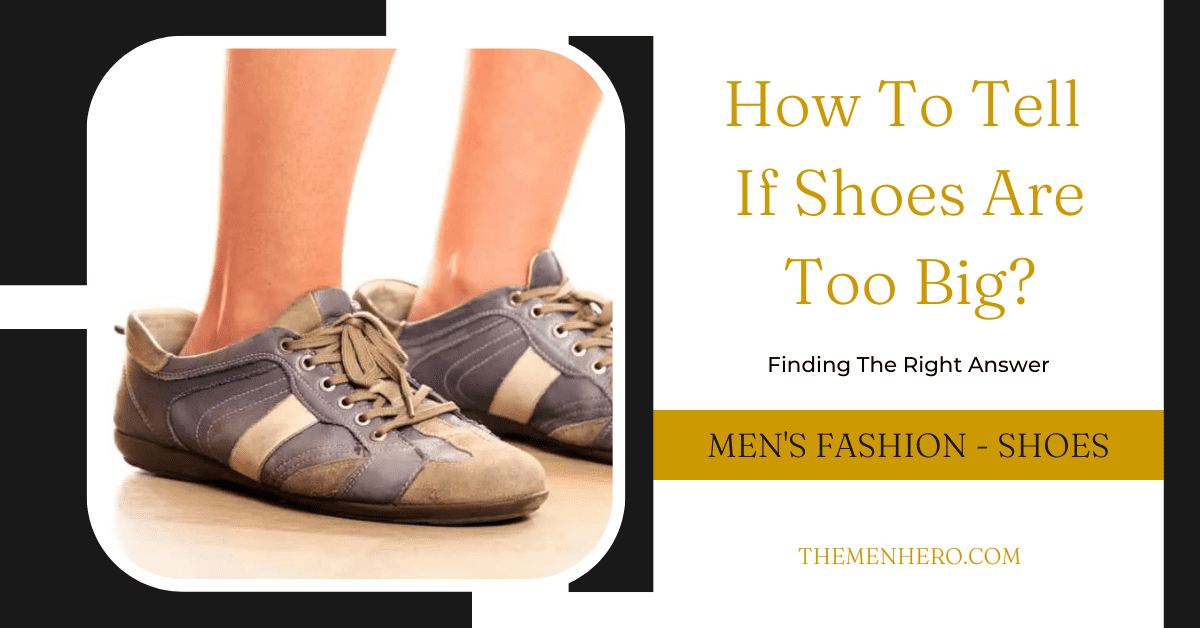Find out the information you need about How To Tell If Running Shoes Are Too Big in this article, all summarized clearly by us.

How to Tell if Running Shoes Are Too Big
Running shoes are an essential part of any runner’s gear. They provide the support and cushioning needed to protect your feet and joints from the impact of running. However, it’s important to make sure that your running shoes fit properly. Shoes that are too big can cause blisters, chafing, and other foot problems.
Here are a few ways to tell if your running shoes are too big:
Too Much Room in the Toe Box
The toe box is the part of the shoe that houses your toes. It should be roomy enough to allow your toes to move freely, but not so roomy that your toes are sliding around inside the shoe. If you have too much room in the toe box, your feet will move around inside the shoe, which can cause blisters and chafing.
Heel Slippage
Heel slippage is another sign that your running shoes are too big. When you walk or run, your heel should fit snugly into the heel of the shoe. If your heel slips out of the shoe, it means that the shoe is too big. Heel slippage can cause blisters and chafing, and it can also make it difficult to run efficiently.
The Arch of the Shoe Doesn’t Match Your Foot
The arch of the shoe should support the arch of your foot. If the arch of the shoe is too high or too low, it can cause foot pain and discomfort. If you have high arches, you need a shoe with a high arch. If you have low arches, you need a shoe with a low arch.
The Overall Fit of the Shoe Feels Loose
If your running shoes feel loose overall, they are probably too big. Running shoes should fit snugly to your feet, but they should not be so tight that they cut off circulation. If your shoes feel too loose, they will not provide adequate support and cushioning, and they may cause blisters and chafing.
Tips and Expert Advice:
-
When trying on running shoes, wear the socks you plan to wear when running. This will help you get a better sense of how the shoes fit.
-
Walk and run around in the shoes for a few minutes to make sure they feel comfortable. Pay attention to how your feet feel in the shoes. Do they feel supported and cushioned? Are there any areas that rub or chafe?
-
If you are unsure whether or not your running shoes fit properly, consult with a running shoe expert at a local running store. They can help you find the right pair of shoes for your feet and running style.
FAQs:
Q: How often should I replace my running shoes?
A: Running shoes should be replaced every 300-500 miles. However, the exact lifespan of your shoes will depend on how often you run, the type of terrain you run on, and your running style.
Q: What are the consequences of wearing running shoes that are too big?
A: Wearing running shoes that are too big can cause blisters, chafing, and other foot problems. It can also make it difficult to run efficiently.
Q: What are the benefits of wearing running shoes that fit properly?
A: Running shoes that fit properly provide support and cushioning, which can help to prevent injuries. They can also make running more comfortable and enjoyable.
Conclusion
Wearing running shoes that fit properly is essential for runners of all levels. If your running shoes are too big, they can cause blisters, chafing, and other foot problems. By following the tips above, you can find the right pair of running shoes for your feet and running style.
Are you interested in learning more about running shoes? Check out our other blog posts on the topic!

Image: themenhero.com
How To Tell If Running Shoes Are Too Big has been read by you on our site. Thank you for your visit, and we hope this article is beneficial for you.